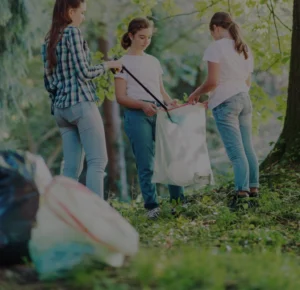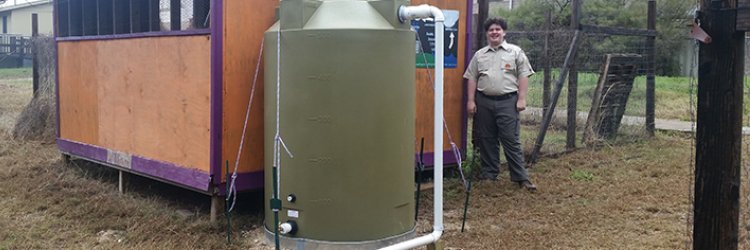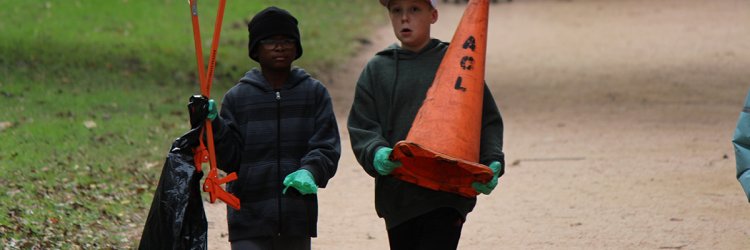Compost is decomposed organic material, made up of materials like leaves, shredded twigs, and plant-based kitchen scraps.* But it takes more than organic material to create quality compost. We need decomposers as well.
While many composts rely on decomposers like fungus, bacteria, and various invertebrates, there are many different composting methods. Compositing with worms, also known as vermicompost, is one such type. It relies on worms, in addition to decomposers found in other composts, to turn organic waste into high-quality compost.
The Composting Process
The composting process involves four main components: organic matter, moisture, oxygen, and decomposers. Fungus, bacteria, and some invertebrates, including worms, are all decomposers.
First, bacteria and other microbes get the process going. By supplying organic materials, water, and oxygen, the already-present bacteria will break down the plant material. Then, fungus and invertebrates move in to finish things up.
As the decomposers break down the materials, they create and release heat, which is concentrated in the center of the pile. While vermicompost maintains a fairly low temperature, some home methods can produce quite a bit of heat. While you can feel this heat yourself if you stick your hand deep into a compost pile, you’ll want to be careful! You can even see it if you turn the pile on a chilly day.

Composting with Worms: What Is Vermicompost?
Vermicompost is unique because it specifically relies on worms to create high-quality compost. It consists mostly of worm casts (droppings), in addition to decayed organic matter. In ideal conditions worms can eat at least their own weight of organic matter in a day. Their casts contain eight times as many microorganisms as their feed!
Worms are important decomposers because they break down old dead matter found in the soil allowing new plants to grow. In the garden, worms also move about, letting air into the ground, mixing up minerals, and helping the soil drain water.
Three types of worms
- Epigeic worms live in the organic layer on top of the soil or along streams where detritus accumulates
- Endogeic worms live within the mineral soils beneath the organic layer about an inch or two below the surface
- Diageic worms burrow deep into the soil and their long term habitat might be near parent rock several feet deep
Did You Know…?
- California red wiggler wormers are the most efficient type of worm for vermicompost. They are able to live in close quarters with one another and are thus able to break down materials much faster than other worms.
- Worms can consume their weight daily. They eat half bedding (carbon) and half food scraps (nitrogen). So approximately 2 lbs. of red wiggler worms will compost 1 lb. of organic matter in 24 hours.
- Worms are hermaphrodites, meaning they have both male & female parts. It takes 2 worms to mate but both worms produce a cocoon. Each cocoon or egg contains up to 20 babies (average 3 – 4, depending on species).
- A mature worm (3 months old) can produce 2-3 cocoons per week. Cocoons take up to 11 weeks to mature and hatch and each cocoon averages 3 hatchlings – 1 worm x 3 cocoons/wk x 3 hatchlings/cocoon = 9 hatchlings/wk
- Worms don’t have eyes. However, they are very sensitive to light, and try to hide as soon as they are exposed to light.
- Worms do not have teeth and cannot chew their food. Some worms grind their food in their gizzard using muscle action and small bits of soil. Other worms rely heavily on bacteria and fungus to break the food down into mush.

Why Should We Harvest Vermicompost?
There are so many reasons why composting is beneficial to us and the environment we live in.
First, compost is recycling. Food and yard waste make up approximately 29.8% of the waste in our landfills. If wood and paper is included, organic waste comprises over 50% of landfills. Composting is nature’s way of recycling or decomposing.
Second, compost is free plant food. It adds organic matter to the soil to help improve plant growth and health without using chemical fertilizer, which can be harmful to our and the environment’s health.
Finally, compost retains water and improves and increases the water-holding capacity of soil, which in turn helps plants grow faster and healthier.
In addition to the overall benefits of composting, vermicomposting in particular is one of the more high quality composts because it makes nutrients more readily available to plants than other kinds of composting do.
Want to learn more about composting in Austin and how to get started? Click here to read more.
Are you an educator who wants to teach your students about composting? Check out our education programs to learn more or request our Compost Critter curriculum here.
*While there are some compost systems that can process meat and other animal products, this article focuses on compost systems that are plant-based waste focused.





